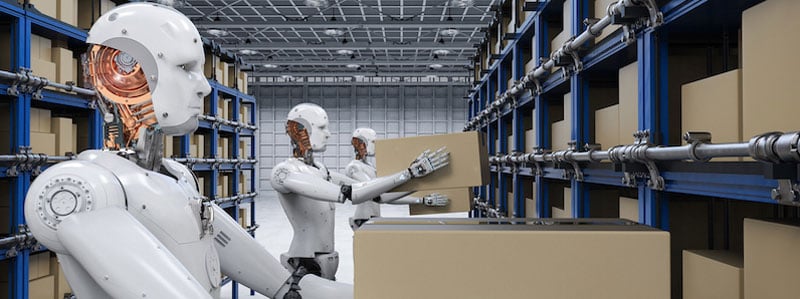The ‘Bionic Worker’: Automation to Enhance the Workforce

March 15, 2019 written by Rob DeStefano -Ivanti
Many warehouse and supply chain workers are anxious that ever-increasing levels of automation, caused by the rapid growth of eCommerce, will eventually squeeze them out of their jobs. But fortunately, that is not the case and automation will instead compensate for the labor shortage that the industry is currently facing by creating the ‘bionic worker’. This isn’t a title of a sci-fi movie, but instead refers to making an employee more efficient and productive through the use of wearable, mobile technology.
Hands-free means speed
Handheld mobile devices, including scanners and ruggedized tablets, have been essential to the running of an effective warehouse for years and this trend will continue to evolve as workers themselves become bionic. Wearable devices, such as headsets or smart watches, will let warehouse employees smoothly integrate technology with their work and take a more hands-on approach which drives productivity and enables workers to fully utilize the time they have to complete each of their tasks.
Connecting with technology in this way will allow employees to bring a level of automation to their own work. For example, taking advantage of voice enablement software, such as All-Touch Terminal Emulation with Ivanti Speakeasy or vision-picking with an evolution of Google Glasses, means workers will be able to hear or see their optimal route around the warehouse without having to figure it out themselves or fiddle around trying to bring it up on a tablet. They will be able to move around the warehouse unhindered, with their eyes and hands free from distraction which will ultimately increase their productivity and speed. These devices can also inform workers how long it should take them to complete each of their tasks and provide a countdown to ensure they stay on track during their shifts – something that is crucial in a fast-paced warehouse environment.
Safety first!
Looking after your employees is essential and bionic technology can improve the safety of warehouse workers. Voice and vision-picking systems can prevent workers from having to complete the same repetitive movement throughout the day meaning fewer staff members will suffer from repetitive strain related injuries. This, not to mention the safety of workers navigating the warehouse with their eyes scanning for hazards rather than looking down at a device screen.
Wearable technologies are also being developed to support employees that take on more manual and physical roles. Exoskeletons are an example of this wearable expansion and one that car maker Ford introduced into 15 of its factories last year. These suits are extremely useful for employees as they wrap around the body and assist when they are manually lifting or reaching overhead, and also aim to lower injuries from repetitive motion. Safety comes in many forms, and this example confirms wearables are playing a role in a number of use cases.
The bionic worker isn’t a future concept but something that is happening right now, fueled by modern technology innovations. What this shows is that with the current labor shortage the industry doesn’t have to rely on robots. Supply chain employees should embrace technological innovations because automation can work to their advantage by combining the best of both worlds; the speed and accuracy of technology with the knowledge and creativity of people.
Meet the Ivanti and Zebra technical teams at APPFORUM 2019 in Europe, Sydney, Beijing and Las Vegas. Register now.

Brian Munroe

